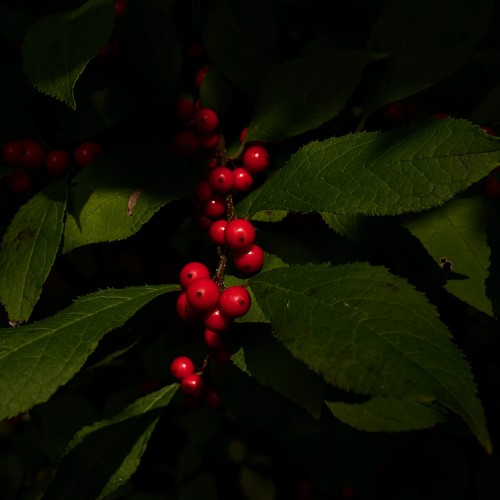
winterberry
Ilex verticillata 'Cacapon'
Cycle:
Perennial
Watering:
Frequent
Hardiness Zone:
3 - 9
Flowers:
Flowers
Sun:
Full sun,part shade
Fruits:
Fruits Ready In Fall
Edible:
Yes
Leaf:
Yes
Growth Rate:
Low
Maintenance:
Low
Salt Tolerant:
Yes
Care Level:
Medium
watering
Winterberry (Ilex verticillata 'Cacapon') should be watered weekly, allowing the soil to become dry in between waterings. Aim for 3-4cm (1-2 inches) of water per session. Increase this slightly during periods of excessive heat. It is best to water early in the day, so that any excess moisture has time to dry off the leaves and stems. Avoid overwatering, or water that pools in the center of the pot – both of these can lead to root rot.
sunlight
Winterberry (Ilex verticillata 'Cacapon') is a deciduous shrub that flourishes in full sunlight or partial shade. The plant prefers at least 6 hours of direct sunlight each day in order to thrive. However, it can survive in partial shade, especially during the hottest parts of the day. Winterberry will benefit from indirect sunlight for the remainder of the day to provide a balance of both direct and indirect light.
pruning
Winterberry (Ilex verticillata 'Cacapon') should be pruned annually in late winter to early spring, just before they begin to grow new foliage. Pruning should be mild, removing only ripe, woody stems and thinning out overcrowded branches. Take care to remove no more than 1-third of the branches each time. Depending on the size of the shrub, the pruning can be done with hedge shears, pruning saw, or a pair of loppers. Pruning winterberry shrubs also helps to promote better air circulation and light penetration through the canopy.
